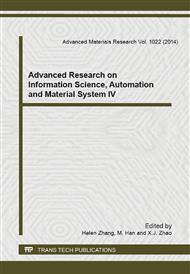p.269
p.273
p.277
p.282
p.286
p.292
p.296
p.300
p.304
Applied-Information Technology with DSP-Based Recognition Algorithms of Driver Fatigue
Abstract:
To be effective, and real-time detect fatigue, system based on the DM642 module,platform and infrared camera collects images and detects fatigue. the optimization algorithm is implementated on the special DSP library. That using skin color Gaussian model, connected domain and integral projection method detects eyes. Target area is divided by adaptive threshold.we use sobel edge detection and extraction of integral projection to extract eyes closure degree, and use PERCOL to judge fatigue. Experiments show that the system improves the computing speed and precision and realizes the real-time detection purposes.
Info:
Periodical:
Pages:
286-291
Citation:
Online since:
August 2014
Authors:
Keywords:
Price:
Сopyright:
© 2014 Trans Tech Publications Ltd. All Rights Reserved
Share:
Citation:


